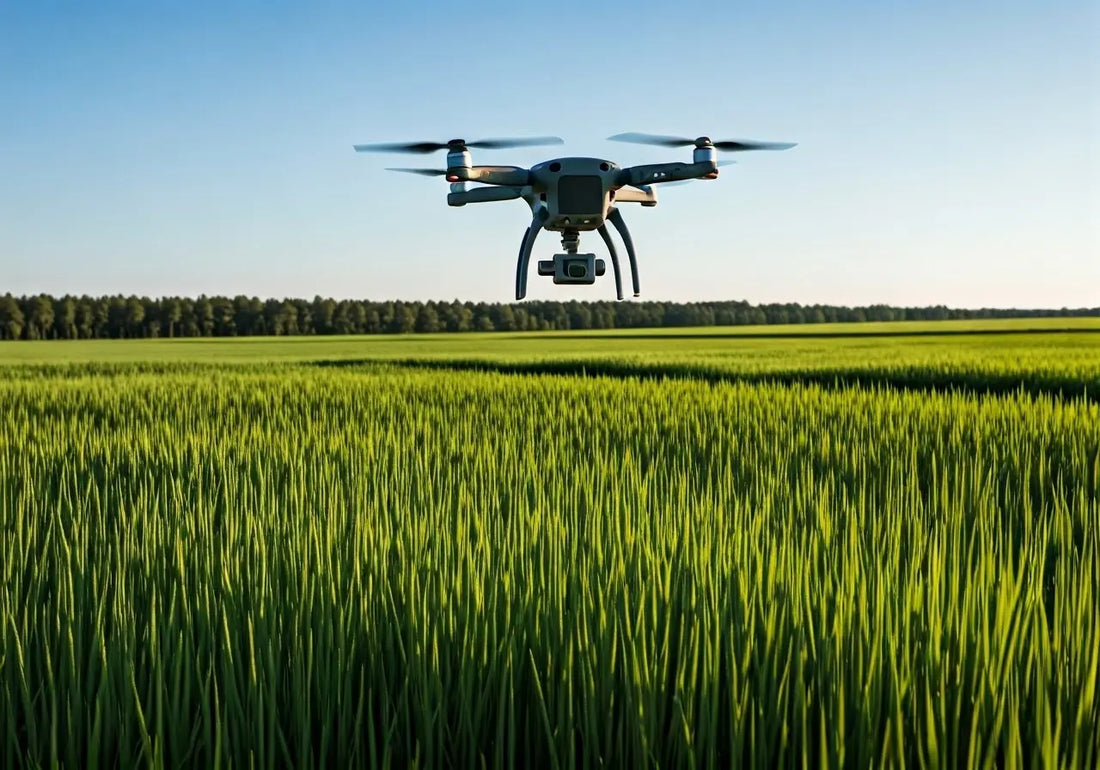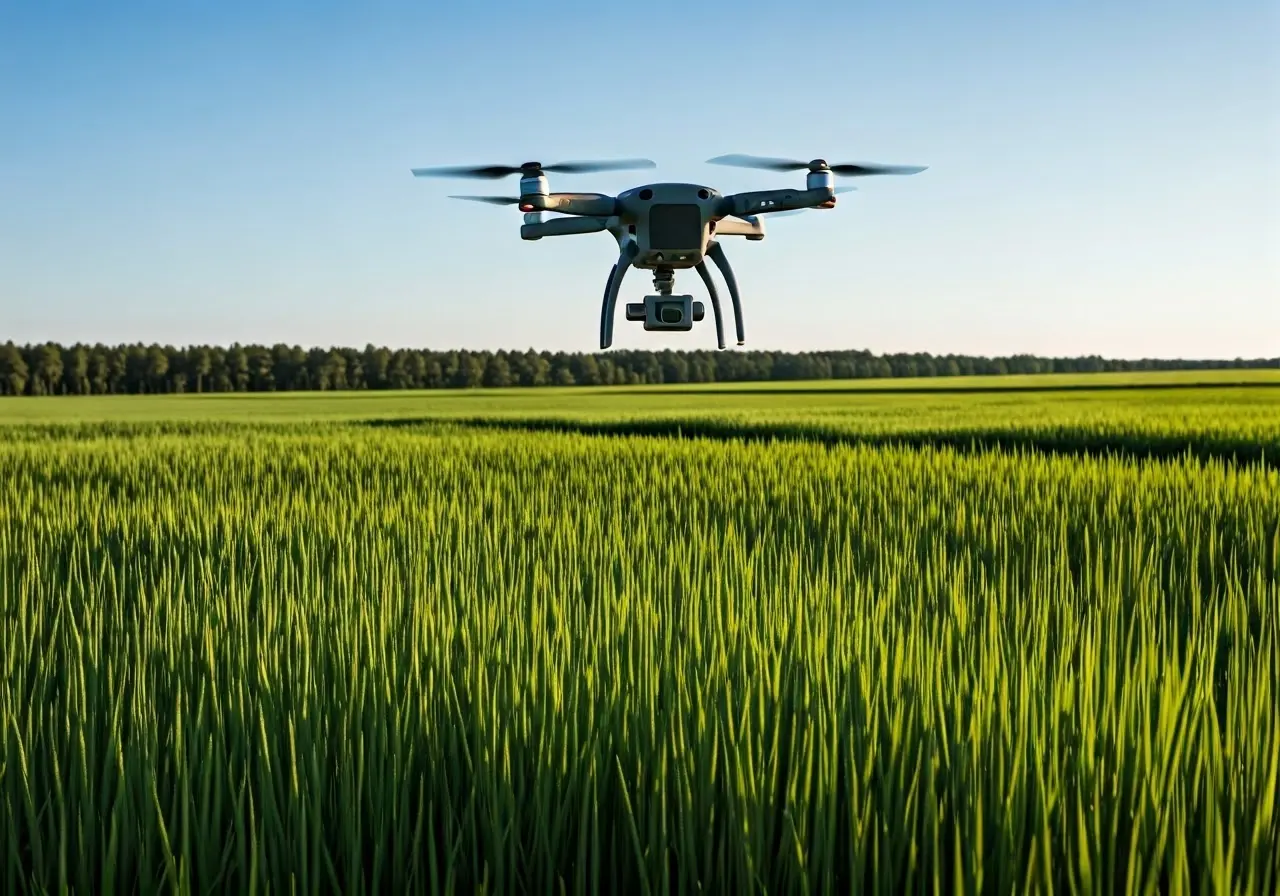
Demystifying DJI Relay for Agricultural Success
Share
In the ever-evolving world of agriculture, technology continues to play a pivotal role in enhancing productivity and sustainability. Among the impressive tools available to modern farmers, DJI Relay stands out as a game-changer. This blog will break down what DJI Relay is and how it can be harnessed for agricultural success, all explained in an easy-to-understand manner.
Understanding DJI Relay: What Is It?
DJI Relay is an innovative communication solution designed to facilitate seamless data transfer between drones and remote controllers. By acting as an intermediary, it ensures that crucial information is reliably transmitted, even over longer distances. But what exactly makes it stand out in the crowded field of agricultural technology? The secret lies in its ability to maintain strong signal connections despite natural barriers and extended ranges. Farmers often struggle with spotty coverage due to vast open fields, but DJI Relay combats this issue by providing robust communication through a network of strategically placed relay points. This reliability is essential for maximizing the uptime of aerial devices, particularly when surveying expansive areas.
Understanding the technology behind DJI Relay involves exploring how it operates. Essentially, the relay acts as a bridge, ensuring that the data captured by drones is not lost in translation. Think of it as a steadfast messenger tirelessly working to deliver information intact from point A to point B. This process is crucial in settings where every second counts, such as during harvesting or pest control operations. The evolution of relay technology is fascinating, drawing from advancements in wireless communication and infrastructure design to deliver and improve accuracy and efficiency in agriculture.
The Role of DJI Relay in Agriculture
In agriculture, where precise data is essential for decision-making, DJI Relay provides a dependable method for relaying aerial imagery and sensor data. This ensures that farmers are equipped with accurate insights to manage crops more effectively. Consider a scenario where a farmer needs to assess crop health across a vast field. Without effective data relaying, information collected by drones may not be transmitted in real-time, delaying critical decision-making processes. DJI Relay steps in to bridge this gap, fostering a proactive rather than reactive approach to farming.
Furthermore, DJI Relay is indispensable for precision agriculture. By ensuring continuous data flow, it supports technologies like variable rate applications, where resources such as fertilizers and water can be precisely applied according to the specific needs of plants. This targeted approach not only boosts yield but also conserves resources, aligning with sustainable farming principles. For example, by integrating sensor data with drone technology, farmers can pinpoint exactly where to deploy water, fertilizers, or pesticides, significantly reducing waste and environmental impact.
Key Features and Benefits of DJI Relay
DJI Relay offers several features, including extended range, robust signal stability, and compatibility with various devices. These attributes make it a versatile tool for farms of all sizes, enhancing efficiency and reducing data loss. The extended range allows farmers to conduct comprehensive surveys over large tracts of land without worrying about connectivity interruptions. This is particularly beneficial for operations spread across several kilometers, where traditional methods might falter. Moreover, compatibility is crucial as it ensures that existing equipment can integrate seamlessly with new technologies, facilitating a smooth transition towards more advanced agricultural practices.
Another critical benefit of DJI Relay is its capacity to streamline operations and improve data accuracy. With uninterrupted data relay, farmers receive real-time updates about field conditions, allowing them to make informed decisions swiftly. The impact of swift decision-making cannot be overstated, particularly when considering how quickly crop conditions can change due to weather patterns and other variables. By minimizing delays, farmers can better respond to dynamic environmental factors, thereby optimizing outputs and reducing losses.
Implementing DJI Relay: A Step-by-Step Guide
For those interested in adopting DJI Relay technology, the process is straightforward. From initial setup to ongoing maintenance, this section will walk you through each step to ensure a smooth integration into your farming operations. The first step is assessing your current setup and identifying areas where relay technology can improve efficiency. Once potential sites for relay points are identified, the next phase involves setting up these stations strategically to maximize coverage.
Next, technical integration with existing devices should be considered. Farmers must ensure compatibility between the DJI Relay system and their existing fleet of drones and sensors. This step typically involves configuring software settings to allow seamless communication between components. Training is also a crucial part of implementation. Operators and farm workers should be familiarized with the new technology to utilize its features fully, reducing the likelihood of operational hiccups.
Continual monitoring and maintenance of the system ensure it remains reliable. Regular checks help detect any deviations promptly, thus preventing potential communication breakdowns. As a dynamic solution, DJI Relay may require periodic updates to accommodate advancements in drone technology and agricultural practices, ensuring it continues to meet the innovative demands of modern farming.
Success Stories: Farmers Reaping the Benefits
Countless farmers are already leveraging DJI Relay for improved crop monitoring and resource management. Read about some success stories that highlight the tangible benefits of this cutting-edge technology in real-world agricultural settings. For example, a soybean farmer in the Midwest utilized DJI Relay to monitor plant health and make timely irrigation adjustments based on real-time data, leading to a substantial increase in yield despite challenging weather conditions.
Another narrative comes from a vineyard in California, where utilizing drone technology complemented by DJI Relay dramatically changed their operation workflows. The winemakers leveraged precise data to adjust grapevine management practices, enhancing both the quantity and quality of their harvest. These stories underscore the transformative impact that technology, especially reliable communication systems like DJI Relay, can have. They offer inspiration for other farmers looking to harness similar benefits.
Embrace the Future of Farming with DJI Relay
Embracing tools like DJI Relay can truly revolutionize your farming practices. With its ability to enhance communication, improve data collection, and streamline operations, it paves the way for a more efficient and productive future in agriculture. Whether you’re a tech-savvy farmer or just beginning to explore technological solutions, DJI Relay offers opportunities for everyone.

